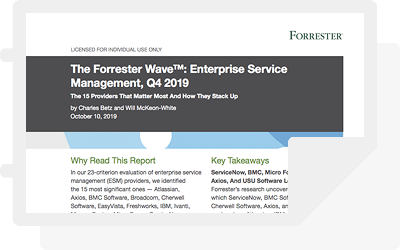When we talk about technology, it is sometimes overwhelming to keep on top of new terminology and trends. Enterprise application software (EAS) is a term that we hear often, though it isn’t always easily defined.
In general, enterprise application software is large-scale software that is aimed to support or solve the problems of an entire organization. This large-scale software allows for several different user roles, and the roles define the actions a specific user can perform.
Let’s look at an example of generic enterprise application software when used in a sales setting. The enterprise software includes many functions and abilities:
- Salespeople can log client information, including personal and product information and client location in the sales pipeline.
- Customer service representatives can track client issues and communication alongside internal responses and updates.
- Internal-facing employees can take client specifications to build the product.
- Managers and C-level executives can track client and employee performance.
In this article, we’re doing a deep-dive understanding of EAS: what it is, how it’s used, how it compares to other types of software, and who is best suited to take advantage of its benefits.
What is an enterprise?
Before we jump into the software side of things, let’s define what we mean when we talk about an enterprise.
The word ‘enterprise’ is defined as a unit of economic organization or activity, especially a business venture or organization.
The key piece to understanding enterprise is size. An enterprise could surely describe a self-employed entrepreneur or small business, but it is more often used to describe very large organizations that have many activities and functions. Examples of enterprises include:
- Parts of or an entire local, state or federal government entity
- Medium- to large-sized companies that may work across an entire country or internationally
- School systems or districts
- Non-profit groups that support and work in many areas
In any of these enterprise examples, imagine all the employees who need access to certain information in order to perform their various functions, which are essential to getting the job done. A large enterprise may need to cover: sales, customer service, internal and external communication logs, production specifications, goals and productivity measurements, etc.
If the organization is large and has many individuals with varied roles within it, we can likely call it an enterprise.
Defining Enterprise Software
Now that we understand an enterprise, we can look at the software side of an enterprise. An enterprise is a large-scale organization, so it follows that enterprise application software is large-scale software. Beyond just the size of the software, enterprise application software typically refers to software that provides mission critical solutions to the entire or majority of the organization. If the software takes care of a majority of tasks and problems inherent to the enterprise, then it can be defined as enterprise software.
In this article, we’ll use the term enterprise application software, or EAS for short, but is it also commonly known by other names including:
- Enterprise software
- Enterprise application
- Enterprise app
In his book Patterns of Enterprise Application Architecture, software developer and consultant Martin Fowler divides the major activities of enterprise application software into two sections:
- The display, manipulation, and storage of large amounts of complex data.
- The support and/or automation of business processes that rely on this data.
While there’s no single set of characteristics that define enterprise software, common enterprise applications often include characteristics including:
- Widespread performance, often across many physical locations
- Scalability
- Robustness
- Business-oriented
- Critical to the mission of the enterprise
- Ability to interface with other enterprise software the enterprise relies on
- Centrally managed
- Comprised of a suite of computer programs, such as:
- common business applications
- tools for modeling the entire organization
- development tools to build apps unique to organization
Any type of enterprise software will likely have many capabilities. For instance, if you’re looking for an IT service management enterprise software option, you’ll likely want to look at capabilities that are vital to management your enterprise’s service experience. BMC’s Remedy Service Management includes critical capabilities including: service desk and trouble ticketing, an ITIL-compliant incident or change management, IT asset management, service catalog, knowledge management, and configuration management database.
Common uses for enterprise software include:
- Order processing
- Procurement
- Scheduling
- Customer information management
- Energy management
- Accounting
How is Enterprise Software different from other types of software?
Software is a set of electronic program data, or instructions, that a computer “reads” to perform a task or operation. There are two types of software:
- Systems software refers to the software programs that help the computer run, like the operating system. Without systems software, we would have to manually enter directions for each task we want a computer to complete. Examples of systems software include Microsoft Windows, Apple’s OS, and others.
- Application software, on the other hand, are the day-to-day software we rely on to create documents, databases, spreadsheets, presentations, graphics, and more. We use application software, often shortened to applications or apps, to complete a function or even play a game. Enterprise application software falls into this category, as its function is to support the mission of a large enterprise.
Application software can further be divided into two types: applications that serve the purposes of individuals or the purposes of a larger group, such as an enterprise. If the software only caters to a specific or small portion of the enterprise, it may not be considered EAS. Further, enterprise application software is not meant to support the work or hobbies of individuals, such as Microsoft Word or a single-person game.
Businesses, governments, and other enterprises likely rely on a variety of software packages to cover their business needs. While enterprise software is typically the largest of these, a very popular option is software-as-a-service (SaaS).
EAS versus SaaS
Enterprise software is often explained in contrast to software-as-a-service (SaaS). Several characteristics are important in evaluating which is right for enterprise needs:
- Ability to customize the software
- Database query and reporting
- Functionality
- Cash flow and pricing
SaaS is a popular option for users that need to take care of a very specific purpose. In this software model, users typically rent the software, never owning it. SaaS is often hosted in the cloud, requiring users be connected to the internet to use the software and access the data. (Because of this SaaS can also be known as cloud applications.) But, cloud hosting also means that users can access the software widely, from computers, tablets, and sometimes even smartphones. Popular examples of SaaS include Slack, Salesforce.com, Dropbox, and Zendesk.
While SaaS can provide quick, universal access to software that offers specific actions, its drawbacks may include lack of customization and database maneuvering. The inability to customize this software means it often cannot be specific enough to large-scale, enterprise-wide missions. SaaS offerings are available to many enterprises, and sometimes individual users, so its inherent ability to create queries and reports can be limited. When software is querying or reporting on its data, it must scan the entire database – but when so many users are accessing a cloud-based database, the process can be slow and overloaded. There SaaS often may limit types of querying and reporting available to its users.
In contrast, databases in enterprise application software are meant only for the single enterprise, so other groups aren’t sharing a database and draining its processing capabilities.
In terms of customization, EAS is typically owned outright, giving users much more ability to customize it. Enterprises often have in-house developers and programmers tweak or overhaul the software to make it match enterprise needs. It’s also always malleable – if a new enterprise problem comes up, programmers can implement a new solution within the existing software.
Enterprise application software is typically hosted on physical servers. The software then relies on a computer network to connect to its many users. Some parts of the software may also rely on intranet and occasionally internet connections. Because enterprise software installs directly on organizational servers, the connection is generally more private and secure.
Choosing the right software
Both EAS and SaaS offer myriad solutions to enterprises, but each individual enterprise should consider the goal for each piece of software. Enterprises that require maximum customizability to make a software system fit their enterprise goals as tightly as possible often opt to invest in EAS. Often, a successful enterprise utilizes a combination of EAS and SaaS.







